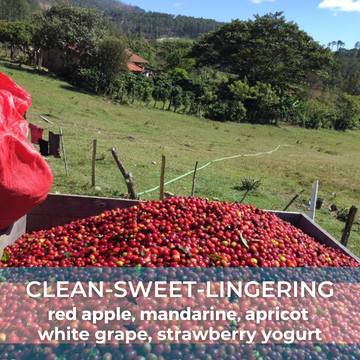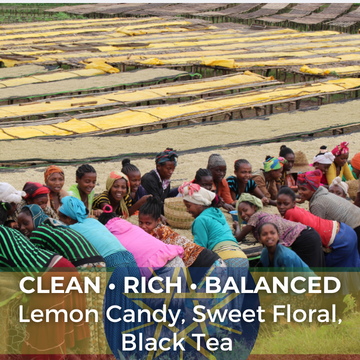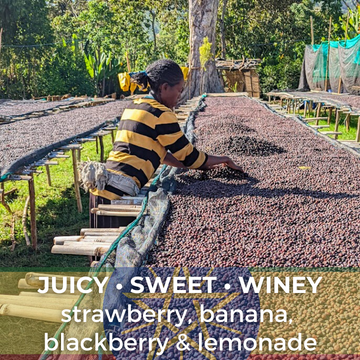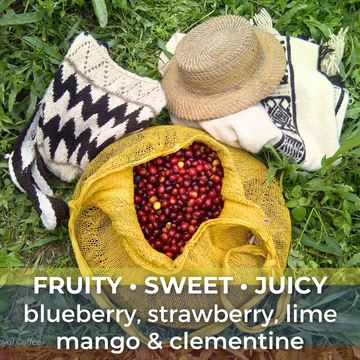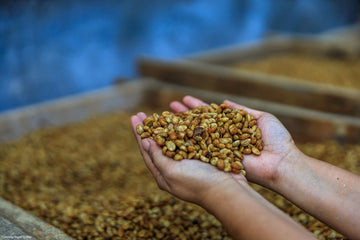Coffee Brewing Basics
How To Brew Coffee Like a Barista
After finding a superb green coffee bean for home roasting (easy if you get your beans from us!) and roasting that coffee to perfection, you are just about ready for the payoff--the Golden Cup. All you have to do is grind your coffee beans and then brew it. Simple, right? It absolutely amazes us how many people blow it in these final two steps. Now is not the time to get lazy, in a hurry, or decide to economize (although that last one is possible with some thought). So what is the best way to make coffee? Read on!
Before You Brew Your Coffee
And before we launch into this--if you don't start with good coffee you are not going to brew a good cup, no matter what you do. Since we are convinced that fresh home roasted coffee is the best coffee possible, we're going to assume that's what you are starting with. If not, you might as well skip reading the rest of this!
First comes the post-roasting rest period. Roasted coffee needs to rest a bit to "off-gas" some CO2. How long? Hard to say. Different coffees seem to reach their peak flavor with varying rest times.
- Generally a window of 4-24 hours after roasting is adequate for off-gassing
- Could be as long as 48 hours or even more.
- How dark you've roasted your coffee impacts how long it should rest.
- Dark roasted coffees need to rest longer
- Light roasted coffees don't need as long to rest.
As basic guide, think of it like wine. A dark red wine is better if it ages longer. Same with dark roasted coffee. Lighter white wines don't need to rest as long--so a lighter roast profile probably doesn't need to wait as long. Your preferred brewing method also impacts this decision. Espresso seems to benefit from a longer rest while drip coffee doesn't need quite as long.
Grinding Your Coffee Beans
Nap time for your coffee is over and it's on to the grinder! Grinding can't be too hard, right? Just turning those whole beans into particles. Well, not so fast. Proper grinding can make a HUGE difference in the quality of your cup.
Here's something to remember: Coffee is about 60% good stuff (flavors, aromas and such) and about 40% bad stuff (like bitter acids). The good news is that the good stuff is much more water soluble and comes out of the ground coffee more readily.
But if you grind your coffee too fine, the grounds get over leached and your coffee will be bitter. If you grind too coarsely, then the grounds are under leached and your coffee will be thin and insipid. Sort of like the Goldilocks thing--not too big, not too small, but just right! How do you find out? Unfortunately it is mostly trial and error. We can't set a hard and fast rule for you, because it depends greatly on your particular grinder. Here's a tip: Even though their coffee itself is awful, most of the commercial coffee in the grocery store that comes in those "bricks" of ground coffee is about the right grind size. So if you look in a bag that is for "filter drip" coffee and you use that method, shoot for a grind particle about that size. Espresso needs a much finer grind, and a French press needs a much more coarse grind. After a few cups you'll have figured out what adjustments you need to make.
We need to take a moment to address the grinder itself. All coffee grinders are not created equal. With prices ranging from about $10 to $1,000 or more, the selection can be a little daunting. Brushing aside issues like capacity, espresso dosers, and all the other bells and whistles (sorry--that's just something you'll have to decide for yourself), we do want to establish one "rule". Get a burr grinder. Do NOT get a BLADE grinder. The difference in the two is basically the method they use to grind your coffee. The burr grinders use, well, burrs to smash and grind your coffee to a relatively uniform size particle. After passing the burrs, the ground coffee falls (or is ejected) into a catch bin. The blade type grinder uses a little "whirly blade" to chop up your beans. The resultant particles, from your brewer's point of view, are boulders and dust. No matter how carefully you use a blade grinder, you can't avoid that. And remember what we told you about grinding too coarsely or too finely? A blade grinder almost by defintion assures you do exactly that. And the two are not self compensating. Even an inexpensive burr grinder is better than any whirly blade grinder. The KitchenAid Pro Line Burr Coffee Mill is an excellent moderately priced grinder. Using one of those little cheapo whirly-blade grinders is one of the easiest ways to ruin a good coffee. May not seem like it, but it is. Really. Bad, bad, bad.
The Coffee Brewer
Now you've completed this step and the whole kitchen is filled with the wonderful fragrance of freshly ground coffee from your burr type grinder. How many people do you know who've made some statement like, "If only coffee tasted as good as it smells..."? Why doesn't it? A lot of the reason why is a poor choice of brewers. The department store shelves are full of drip coffee makers with attractive styling, lots of features and empty promises.
The sad truth of the matter is that the majority of drip coffee makers simply don't get the water hot enough to fully extract your beautiful coffee. They seem to combine this with poor spray patterns, a small ground coffee basket size, and inadequate "dwell" time (that is the amount of time that the hot water spends in contact with the ground coffee prior to entering the carafe). Most of them have a glass carafe that sits on a warmer plate--another exceptionally poor design idea for maximizing coffee flavor.
What they do offer is speed and convenience. There are lots of models that come with a timer so you can fill the basket with ground coffee and set the timer so that when you come into the kitchen first thing in the morning the coffee is there waiting for you. What they've done for you is to guarantee you get a cup of stale coffee. If all you want is speed and convenience, why not just make a cup of instant and be done with it?
- Remember that oxygen is your freshly roasted coffee's worst enemy.
If you grind the coffee before bedtime and let it sit all night, you've exposed a lot of surface area of your coffee directly to that evil oxygen. All night long it is being robbed of flavor and aroma. Yes, the stuff in the pot in the morning is brown, but it is not nearly what it could be. Or should be. If you've never had fresh home roasted coffee before, it may still be the best cup you've ever had, but you have no idea what you are missing. Since our goal is not to simply have a "better" cup, but to enjoy and savor the best cup of coffee possible, we've pitched our automatic drip coffee makers in the trash.
There are actually a few models out there that do a good job. They tend to be expensive, slow, and have a limited pot size, and dispense the coffee into a thermal insulated carafe. None of them have a timer. A good place for reviews of those coffee makers can be found at www.coffeegeek.com.
If you are going to purchase an automatic drip coffee maker, here are a few things we think you should look for:
- First, get one with the highest wattage rating you can find. The higher the wattage, the greater the possibility that the water will be closer to the correct brewing temperature when it reaches the bed of ground coffee.
- Second, get one that dispenses the coffee into a thermal carafe instead of a glass pot that sits on a warming pad. That continual warming of the coffee will cause it to taste bitter and burned in as little as 20 minutes.
- Third, get one with a large brewing basket. It seems that most of these coffee makers are designed for using pre-ground commercial coffee—stuff that is so bad to begin with that you just can't drink it if you brew it overly strong. You may well discover that with fresh home roasted coffee you begin to prefer a stronger and stronger cup, so a large brewing basket will accommodate more ground coffee without overflowing.
- We don't have a real preference between the conical or flat bottom shaped filter baskets. Probably the conical ones under leach the coffee at the top of the cone and over leach the bottom portion, but we can't say for sure.
How to Brew the Coffee
The basics of brewing a great cup of coffee are fairly simple, and can be broken down into three main categories:
- Water
- Coffee
- Brewer
Your water temperature should be 200o F plus or minus 5o. Boiling water will scald your coffee, and anything under 195o just isn't hot enough to extract all that good stuff we told you about. Don't use distilled water--water with no minerals in it will make your coffee taste flat. As a general rule, if your tap water tastes good to you, then use it. If it doesn't, then you should consider filtered water of some sort. Since coffee is about 99% water, if you don't start off with good water, you can't expect a good cup. What ever your source of drinking water is will probably be fine for your coffee, too.
Second, use PLENTY of properly ground coffee. Coffee brewing proportions are important! The Specialty Coffee Association of America recommends two tablespoons of ground coffee per 6 ounces of water. Sound like a lot? It is. That will make a very strong cup. But, if you've used fresh home roasted coffee, it will also be a very good cup. At the very least, we put a heaping tablespoon of ground coffee in our brewers for every 6 ounces of water. Any less than that risks the over leaching problem we mentioned earlier.
Our Favorite Coffee Brewers
As you've noted, we don't think department store drip coffee makers work very well, and you're reading this to find out how to make good coffee. So in this brewer section, we are going to ignore them. There are some excellent coffee brewers available, and they are fairly inexpensive. They tend to be very simple to use, but they are not automatic. Our favorites include the Chemex, the stove top vacuum pot, the French press, and the Aeropress. To buy any of these coffee brewers or to learn more about them, check out our coffee brewers area. The main reason you don't find store shelves lined with these brewers is simply marketing. Big chain stores are convinced that you want speed and convenience over quality. Probably so if you are brewing stuff out of a can, but probably not if you've gone to the effort to home roast your own coffee. Here are some highlights of our brewers:
Aeropress--The thing has no sex appeal at all, but it makes a superb cup of coffee. It looks like a piece of medical equipment--sort of like a giant syringe. The box in which it comes is plastered with some embarrassing advertising hype, but we try to overlook that. It says it brews "espresso". No, it doesn't, but it does make espresso strength coffee. To use it, you place the lower part over a coffee cup, put in some finely ground coffee, add water just off the boil (the cylinder has graduated markings so you know how much water to add--just a few ounces at this point), give it a couple of stirs with the included paddle, do a slow count to 20 and then use the plunger to press the coffee through a disposable paper filter into the cup. Now all you do is add hot water to cut the extremely strong brew in the cup to your preferred drinking strength. We timed it one day--2 minutes and 45 seconds after we entered the kitchen we took our first sip. It is fast, easy, and makes an exceptionally smooth cup. Cleanup consists of simply removing the lower filter retainer, plunging the spent grounds into the waste can, and giving it a quick rinse. That's it. And it is almost indestructible.
Chemex--What the Aeropress lacks in styling, the Chemex has in spades. It is so elegant it was even displayed in the New York Metropolitan Art Museum. But it has a lousy name. Sounds like a kitchen cleaning product. But given the fact that it is so easy to use and makes the clearest, sweetest cup of any brewer, we'll forgive that. It is basically a large pour-over brewer. It is shaped like an hour glass that is open at the top. You just place a conical Chemex filter in the top, add coffee, and pour water just off the boil over the grounds. You have to do this in stages so it doesn't overflow, but it is just that easy. As soon as you've brewed the amount you want, we recommend transferring the coffee to a thermal carafe since the Chemex is an uninsulated glass brewer.
The French Press, or press pot has been around for a long time. It makes a rich, fully extracted brew. Simply place coarsely ground coffee in the pot, add water just off the boil, give it a quick stir, wait 4 minutes and then plunge the filter screen down to push the ground coffee to the bottom of the pot and trap it there. There will be some coffee particulates in the brew, but this adds to a richer mouth-feel. A lot of coffee experts think this is THE way to brew coffee.
The stove top vacuum pot is one of the coolest methods to watch. The pot itself looks like two fish bowls, one sitting on top of the other. The water starts off in the lower chamber, and as the water boils and creates steam it is driven into the upper chamber which holds the ground coffee. After nearly all the water has migrated to the top bowl, you remove the pot from the burner. As it cools, a vacuum forms and the liquid is quite literally sucked back into the lower chamber. Depending on the brand, a variety of filters between the two chambers keeps the ground coffee in the upper chamber and allows only the liquid coffee to move back to the lower chamber. This method really brings out the nuances of the varietal flavors of the coffee.
Wrap Up
See? There really isn't any secret. The best fresh coffee (and plenty of it), properly and freshly ground, placed in a quality brewer using good water just off the boil and you have a cup any barista would be proud to serve. One last hint: Even if you don't like strong coffee, brew it strong anyway and then cut it with some hot water. Your cup will be light years ahead of a brew using too much water and too little ground coffee. Just a little care, a little thought, a little preparation and a little attention--the reward is a BIG cup of flavor and aroma. Enjoy!
